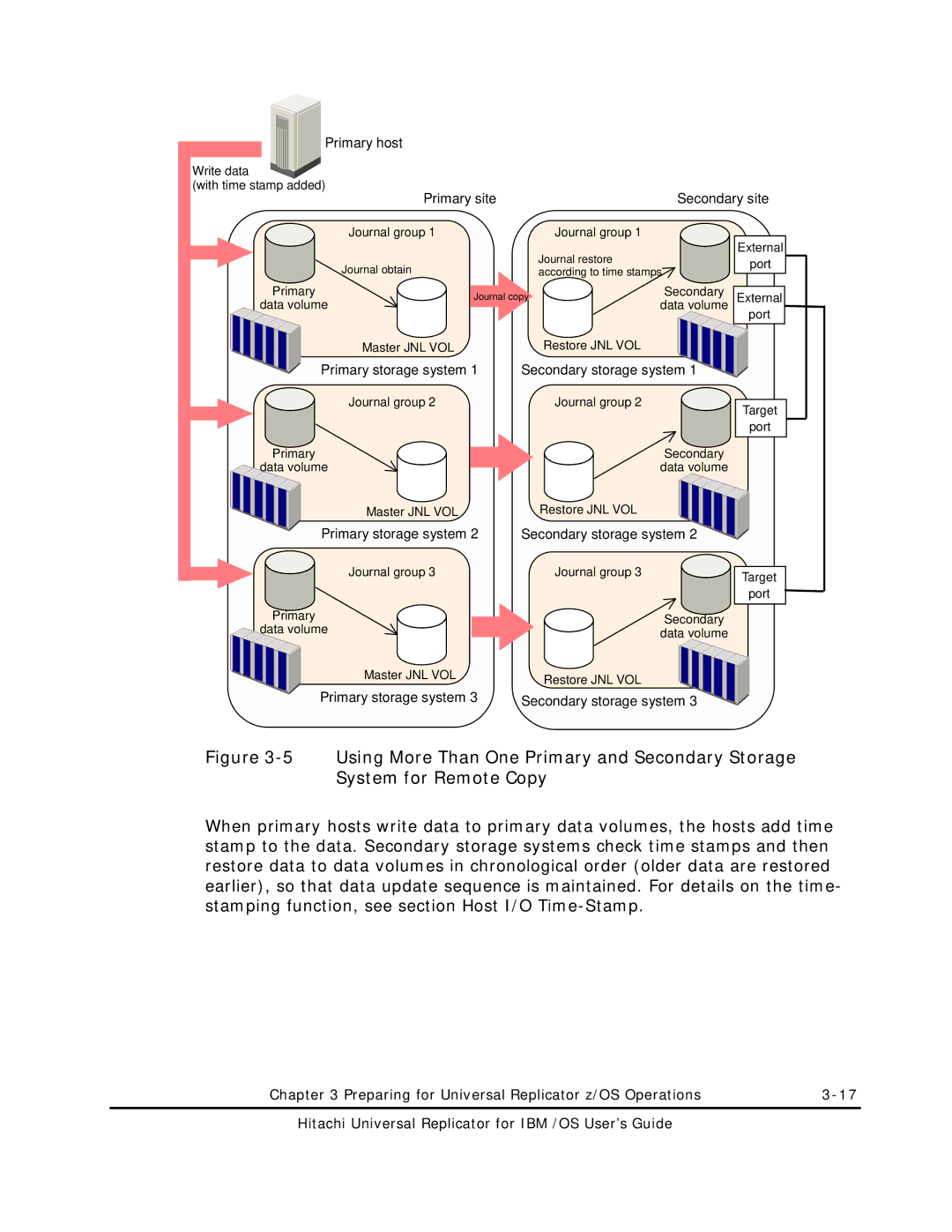
Primary host
Write data
(with time stamp added)
| Primary site | Secondary site | |
| Journal group 1 | Journal group 1 | External |
|
| Journal restore | |
| Journal obtain | port | |
| according to time stamps | ||
|
| ||
Primary | Journal copy | Secondary | External |
data volume |
| data volume | |
|
|
| port |
| Master JNL VOL | Restore JNL VOL |
|
Primary storage system 1 | Secondary storage system 1 |
Journal group 2 | Journal group 2 |
Target
port
Primary | Secondary |
data volume | data volume |
Master JNL VOL | Restore JNL VOL |
Primary storage system 2 | Secondary storage system 2 |
Journal group 3 | Journal group 3 |
Primary | Secondary |
data volume | data volume |
Master JNL VOL | Restore JNL VOL |
| |
Primary storage system 3 | Secondary storage system 3 |
Target
port
Figure 3-5 Using More Than One Primary and Secondary Storage System for Remote Copy
When primary hosts write data to primary data volumes, the hosts add time stamp to the data. Secondary storage systems check time stamps and then restore data to data volumes in chronological order (older data are restored earlier), so that data update sequence is maintained. For details on the time- stamping function, see section Host I/O
Chapter 3 Preparing for Universal Replicator z/OS Operations |
